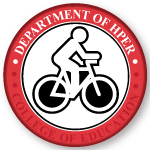Author ORCID Identifier
Document Type
Article
Publication Date
8-4-2020
Publication Title
American Journal of Physiology Heart and Circulatory Physiology
Volume
319
Issue
2
First Page
H456
Last Page
H467
Abstract
Peripheral artery disease (PAD) is a manifestation of atherosclerosis in the leg arteries, which causes claudication. This may be in part due to vascular mitochondrial dysfunction and excessive reactive oxygen species (ROS) production. A mitochondrial-targeted antioxidant (MitoQ) has been shown to improve vascular mitochondrial function that, in turn, led to improved vascular function in older adults and animal models. However, the roles of vascular mitochondria in vascular function including endothelial function and arterial stiffness in patients with PAD are unknown; therefore, with the use of acute MitoQ intake, this study examined the roles of vascular mitochondria in endothelial function, arterial stiffness, exercise tolerance, and skeletal muscle function in patients with PAD. Eleven patients with PAD received either MitoQ or placebo in a randomized crossover design. At each visit, blood samples, brachial and popliteal artery flow-mediated dilation (FMD), peripheral and central pulse-wave velocity (PWV), blood pressure (BP), maximal walking capacity, time to claudication (COT), and oxygen utility capacity were measured pre- and-post-MitoQ and placebo. There were significant group by time interactions (P < 0.05) for brachial and popliteal FMD that both increased by Δ2.6 and Δ3.3%, respectively, and increases superoxide dismutase (Δ0.03 U/mL), maximal walking time (Δ73.8 s), maximal walking distance (Δ49.3 m), and COT (Δ44.2 s). There were no changes in resting heart rate, BP, malondialdehyde, total antioxidant capacity, PWV, or oxygen utility capacity (P > 0.05). MitoQ intake may be an effective strategy for targeting the vascular mitochondrial environment, which may be useful for restoring endothelial function, leg pain, and walking time in patients with PAD.
Recommended Citation
Acute mitochondrial antioxidant intake improves endothelial function, antioxidant enzyme activity, and exercise tolerance in patients with peripheral artery disease Song-Young Park, Elizabeth J. Pekas, Ronald J. Headid 3rd, Won-Mok Son, TeSean K. Wooden, Jiwon Song, Gwenael Layec, Santosh K. Yadav, Paras K. Mishra, and Iraklis I. Pipinos American Journal of Physiology-Heart and Circulatory Physiology 2020 319:2, H456-H467


Comments
This is the accepted manuscript of an article published in the American Journal of Physiology - Heart and Circulatory Physiology on August 4, 2020 and can be accessed at https://doi.org/10.1152/ajpheart.00235.2020